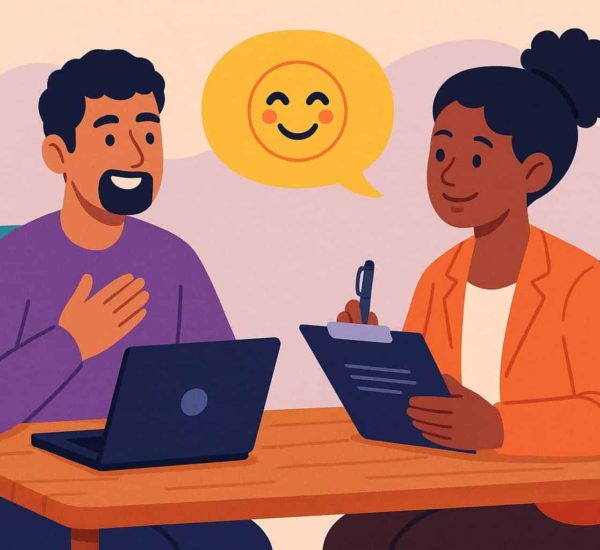Diversity and inclusion (D&I) in the workplace are about creating a culture that values everyone. It’s about making sure that everyone feels welcome, respected, and heard—not just because they’re doing their job, but because they’re a person.
Diversity and inclusion in the workplace mean that people of all races, genders, sexual orientations, ages, abilities, religions, and backgrounds are welcomed—and treated with respect—in the workplace. It also means that people are able to bring their whole selves to work: their unique talents and passions as well as their personal histories and experiences.
The goal of diversity and inclusion is to create an environment where everyone feels included so they can participate fully in the company’s mission and vision.
Building Diverse & Inclusive Workplaces
As the world becomes more diverse, businesses have to adapt. In order for organizations to survive in the modern workforce, they must do more than simply make sure their employees are of different races and genders. Their culture must also be inclusive of people with different backgrounds and experiences.
Diversity and inclusion training gives employees an opportunity to learn about various aspects of diversity: race, gender identity and expression, sexual orientation and socio-economic background are only a few examples.
Diversity and inclusion training is all about building an inclusive workplace where everyone feels welcome—and it’s important that we build these skills so that we can continue working together regardless of our differences.
The value of diversity in the workplace is undeniable: it enhances creativity and problem-solving, improves innovation and performance, promotes better communication across departments and teams, reduces turnover, and boosts employee engagement and satisfaction—the list goes on.
However, creating a more inclusive environment does not happen overnight. It requires deliberate effort from leaders at all levels of an organization to foster an environment where employees feel valued for who they are as individuals—not just what they can contribute to the company’s bottom line.
This blog will talk about D&I training in the workplace.
How can Inclusion Help You Create an Impactful Culture in Your Organization?
Inclusion efforts will help you build an organization that can thrive in the modern workforce. By creating an inclusive culture, you are able to attract and retain top talent from diverse backgrounds and make your company more competitive by increasing its overall diversity.
There are many ways to create an inclusive culture. You can hire a diverse group of employees, provide opportunities for professional development, offer training programs targeted toward different groups (such as women or veterans), ensure there are no biases in performance reviews and compensation systems and communicate with employees on a regular basis about what is happening within the company so they feel connected to its mission, etc
Making Your Workforce Diverse is Good for Your Company
Diversity makes your company better.
Diversity increases the creativity of your organization—research shows that diverse teams are more innovative. This is because they can come up with ideas that would not occur in a homogenous group. In addition, diverse teams are more likely to stay together over time; they don’t go through cycles of hiring and firing as often as non-diverse teams do, so they develop strong relationships with each other. These relationships also help improve communication within the workforce, resulting in better work environments and increased employee satisfaction (which leads to retention).
What is Diversity and Inclusion Training?
Diversity and inclusion training is a process in which employees are trained to better understand the importance of diversity and inclusion in the workplace. Diversity can be defined as the combination of differences, or what makes us unique from one another. Inclusion refers to how we work together to create an environment where all people feel like they belong.
Inclusive cultures foster trust, collaboration, innovation, respect, and fairness. They also help minimize employee turnover because employees feel valued for who they are as individuals and not just their job performance alone. Training your team on how best to navigate these concepts will help them navigate through disagreements without judgment while at work so that conflicts can be resolved quickly without affecting productivity overall.
Real-World Examples of Why Diversity Training is Important
You can also think of diversity training as a way to create a more inclusive workplace. A lot of people are under the impression that diversity is only about hiring and representing people from minority groups, but it’s much more than that. Think about it: when you have employees who are all working in the same environment, they’re going to use common language and share points of view—which means they’ll be exposed to the same types of ideas and biases over time.
That can make them less likely to question their assumptions or ask themselves if there might be another way of looking at something—and those blind spots may lead them down paths that aren’t always best for everyone involved.
Sephora
Sephora is a company that has been lauded for its dedication to diversity, and the beauty industry as a whole. In fact, Sephora’s commitment to diversity is so strong that it has been recognized by many publications.
Sephora’s commitment to diversity and inclusion was born from the belief that beauty should be accessible to everyone. This means that they want all of their customers, no matter their race or gender identity, to feel welcome in their stores. They also want all of their employees to feel at home at Sephora—no matter what race or gender identity they identify with.
Sephora understands that every person who walks through their doors deserves respect and kindness from their employees regardless of who they are or where they come from.
Coca Cola
Including and celebrating different people and opinions is embedded in their growth story. Coca-Cola is committed to fostering diverse teams that reflect the communities they serve, and to creating an inclusive environment where everyone’s unique perspectives are valued and heard. By constantly building a diverse and inclusive workplace, they enrich their decision-making and provide ever more innovative solutions and shared value.
How to Make Your Diversity Training Successful?
If you are trying to make your diversity training successful, here are some things to keep in mind:
- What is the goal of the training? Do you want employees to be more aware of other cultures or do you want them to change their behaviors and beliefs? Understanding this will help you define what kind of training needs to take place.
- Include employees at all levels of the company so that everyone can learn from each other. This is important because it shows employees that there are no barriers between management and staff, which builds trust and respect between them.
- Extend and maintain diversity training over time so that new hires don’t have a difficult time keeping up with changes in policies and procedures as they come through your organization’s pipeline.
- Hire an expert who can help train your workers on how best practices should be implemented within your company structure so everyone feels comfortable participating without being singled out for making mistakes during implementation stages (like asking questions).
How Diversity Training can Impact Productivity and Goals?
Diversity Training brings Workplace Cultural Change and Development
Diversity training and education can help you to build a more inclusive workplace. If you have employees from multiple cultures, it is important that they feel comfortable in the environment. Diversity training will help your team become more aware of their own biases and how they operate as a group. This can then be applied to their interactions with other cultures or specific groups of people.
Diversity training also helps individuals learn about their internalized bias and how this may impact their work performance or reputation within a team environment. The goal is for everyone involved in diversity initiatives to come out feeling like they’ve learned something new about themselves and others around them, regardless of gender identity, ethnicity, or sexual orientation.
Increased Productivity
Diversity training is a great way to increase productivity. Studies show that diverse companies are more productive and profitable than those that lack diversity. The reason for this is that diverse groups are better able to solve problems and innovate. They also have more creative ideas and make better decisions, which in turn leads to increased productivity.
Attracting Diverse Talent
Diversity training is also a great way to attract a diverse talent pool. Organizational managers can use diversity training as a way to show their commitment to diversity, which will make them more attractive to top-performing employees and candidates who are looking for workplaces that respect different backgrounds.
Reduces Turnover
Diversity training can help you reduce turnover. When employees understand the benefits of having diverse teams in your organization, they’ll be more likely to stay at your company longer because they feel like they belong there. And if an employee does leave—for whatever reason—it could be beneficial in the long run; after all, it means that another employee came along who felt comfortable enough at your workplace so as not even try leaving!
Achieve Company Goals
Diversity also helps companies achieve their goals. Organizations that embrace these programs have been shown time and time again how important it is for them (as well as their customers) – particularly where customer service is concerned.
What are the different Types of Diversity and Inclusion Training?
Anti-Bias And Culturally Competent Training
Anti-bias and culturally competent training is designed to help you understand the importance of cultural competency, bias, and unconscious bias. This type of training will also help you to understand how these things impact your team and business.
Anti-bias/culturally competent training programs are designed to help people address their own biases so that they can be more effective in working with people from all walks of life.
This type of program can include information about how to:
- Understand the concept of cultural diversity
- Recognize racism, sexism, classism, ageism, and other forms of discrimination that occur in society
- Identify stereotypes within yourself or others around you
Microaggression Training
Microaggression training is a type of diversity and inclusion training that focuses on the subtle but pervasive forms of discrimination in the workplace. While microaggressions may seem like minor remarks or acts, they can have a significant impact on your employee’s self-esteem, sense of belonging, and overall performance at work.
According to Psychology Today, microaggressions are “the everyday verbal, nonverbal and environmental slights, snubs and insults that communicate hostile statements about one’s racial/ethnic group.”
They may be unintentional but they are still harmful because they reinforce negative stereotypes about marginalized groups in the workplace.
For example, a coworker says something disparaging about his son going to college for an engineering degree instead of taking over the family business when he graduates next year; or an employee overhears another talking about how women just aren’t cut out for leadership roles because they don’t have enough confidence. Both examples are instances where employees could experience feelings ranging from embarrassment to anger depending on their own personal experiences with these kinds of comments.
Socialization And Social Awareness Programs
Socialization and social awareness programs are used to help employees understand their own biases, and how they affect the workplace. These programs can help employees understand how to work with people from different backgrounds, which can be especially beneficial for companies that have a diverse workforce.
These types of training are often given in a classroom setting, and focus on more than just teaching employees about diversity; they also have several practical applications for managers in real-world situations. The training may include role-playing exercises or simulations where participants act out scenarios that could happen at work or outside of it (such as when interacting with customers).
By giving you hands-on experience with different types of scenarios, this type of training prepares participants for real-world situations that might come up at work—like having an awkward conversation about race or gender identity with your colleagues—and gives them the tools they need to deal with those challenges effectively if they do arise.
Perspective Taking
Perspective-taking is a central part of diversity and inclusion training. This type of training focuses on helping people understand where others are coming from, and why they may behave differently than their peers. By identifying the underlying motives behind certain behaviors or reactions, perspective-taking helps you learn how to respond appropriately in challenging situations.
The easiest way to do this is by focusing on your own experiences with other cultures, lifestyles, and career paths—and then applying that knowledge to situations you encounter in your everyday life. For example:
- If someone has a strong accent or uses slang words that are unfamiliar to you, try thinking about how those words might make sense if you were in their situation (for example an immigrant who’s trying to fit into American culture).
- If someone is behaving rudely toward another person who seems upset by it, consider whether there’s something else going on between them that could explain why they’re being so aggressive.
Practicing Diversity in the Workplace
Diversity in the workplace is not just about race, gender, and sexual orientation. It’s about all forms of diversity, including age, ability, race/ethnicity, religion/spirituality, and culture.
It’s more than just hiring people from different backgrounds; it’s creating an inclusive workplace that allows everyone to be their best. This can be achieved by:
- Providing a safe environment (e.g., sexual harassment prevention training)
- Defining clear standards for behavior so employees know what is expected of them (e.g., anti-discrimination policies)
The Takeaway
With all of the challenges and difficulties that face organizations today, it’s vital that we do our best to ensure that we are keeping up with the changing times. Diversity and inclusion, in many ways, are at the heart of this change; if you’re not prepared for what lies ahead, then your business may not survive. The key is to remember that diversity isn’t just about race or gender—it’s about everyone who makes up your organization.







